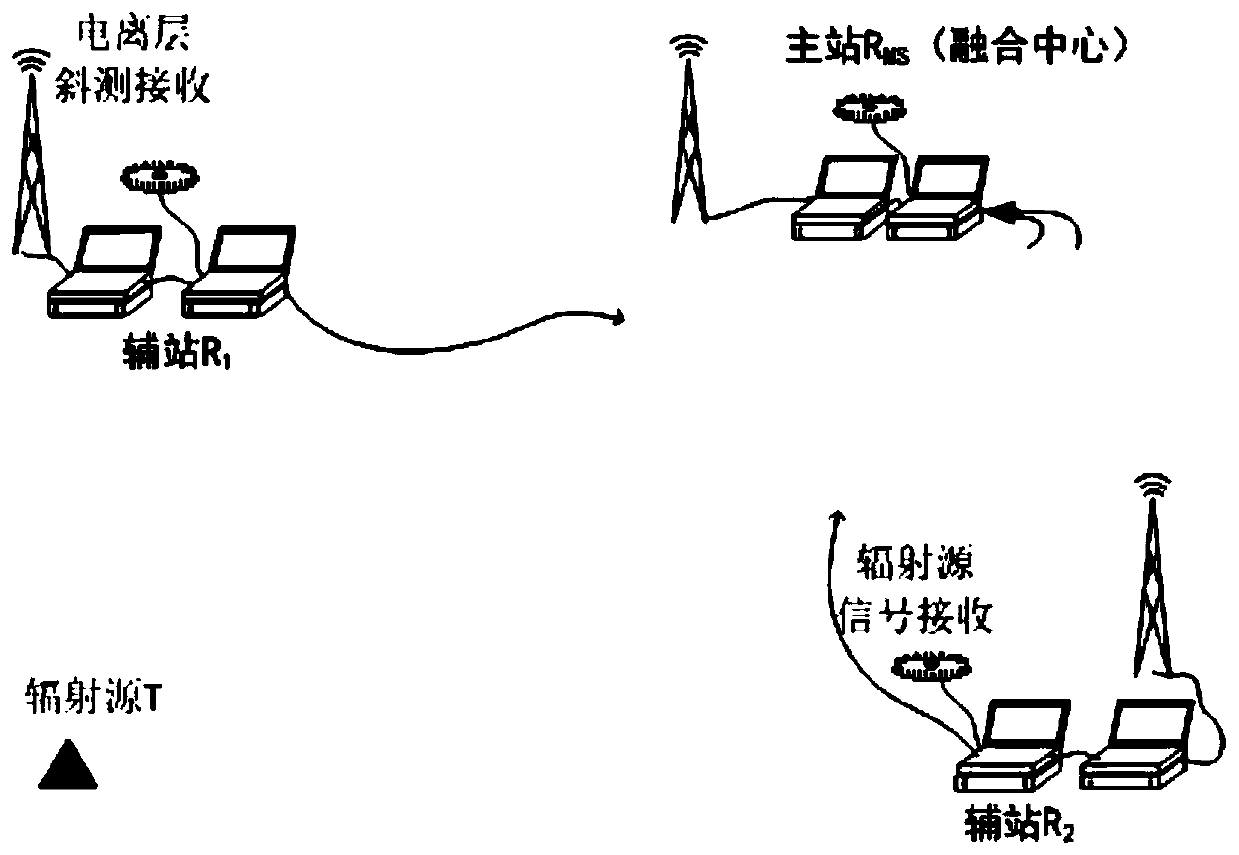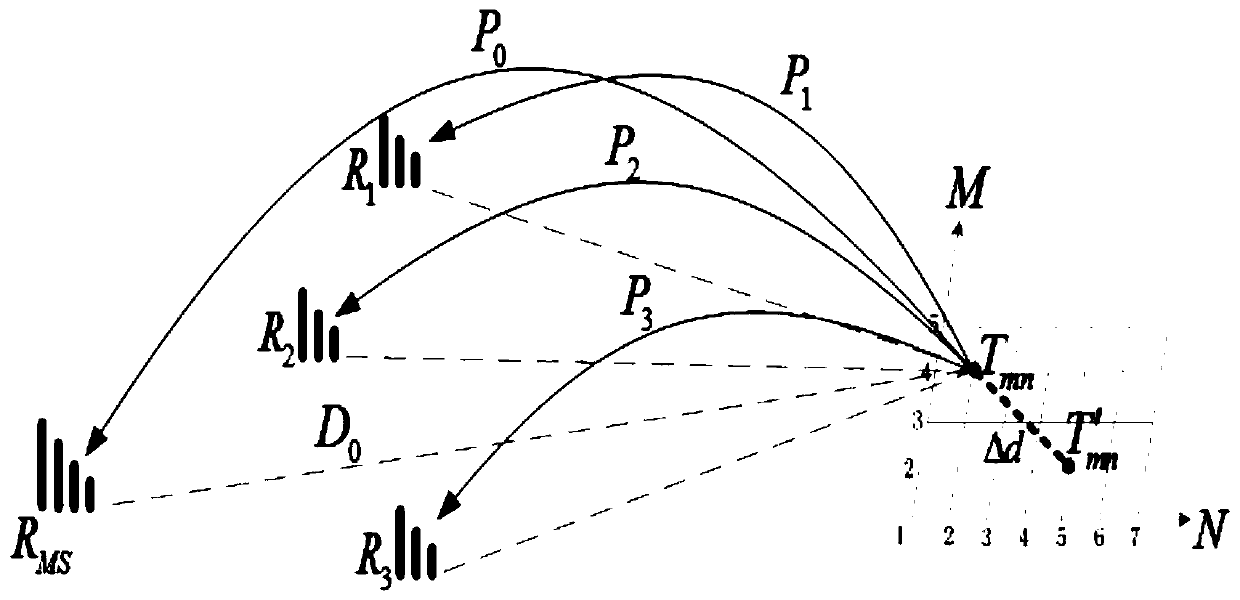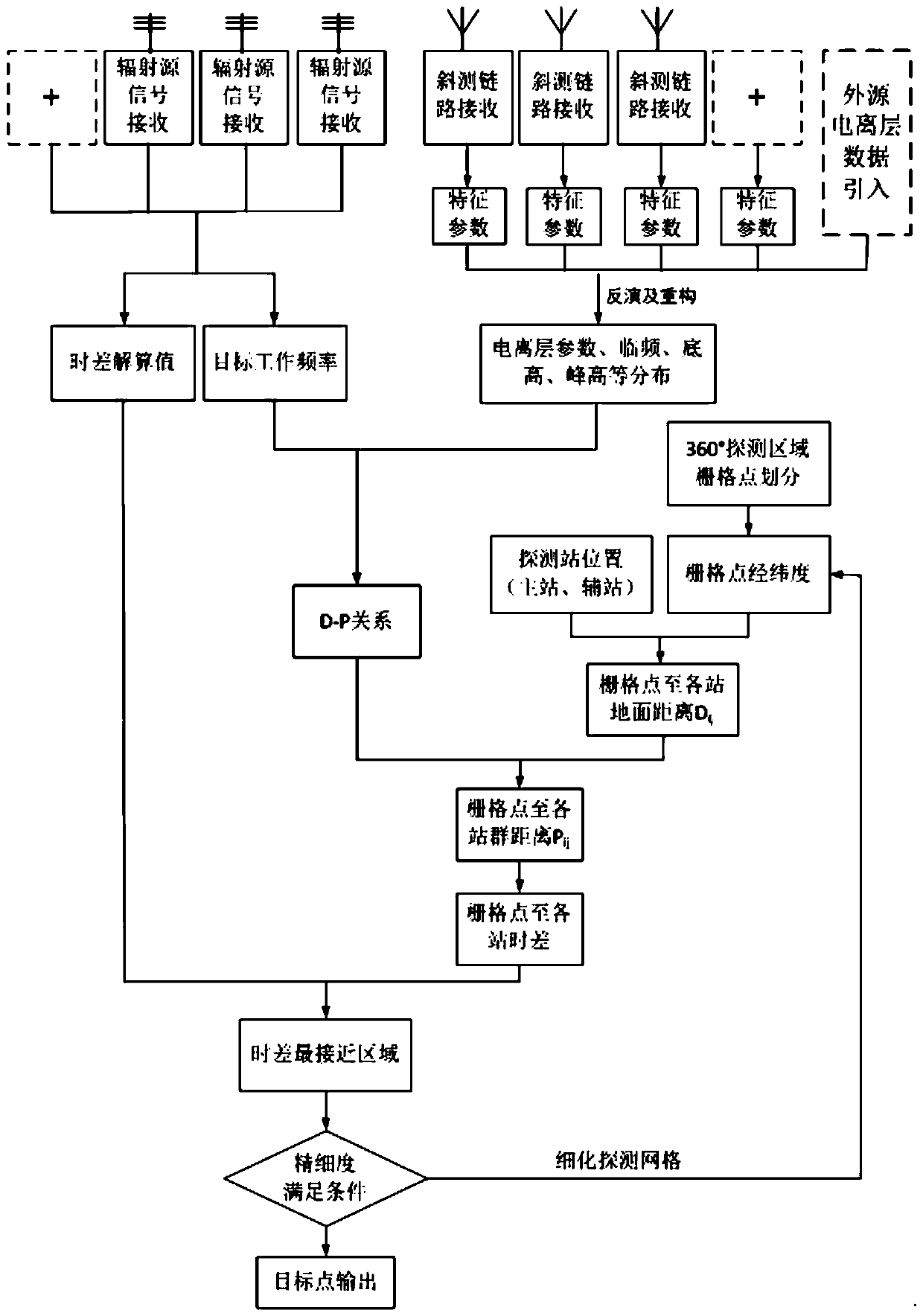Short-wave time difference positioning method based on ionized layer information
A technology of time difference positioning and ionosphere, which is applied in the field of passive detection, can solve problems such as ionosphere environmental impact, increase system complexity and cost, and achieve the effect of expanding business scope, no need to build stations, and simple equipment
- Summary
- Abstract
- Description
- Claims
- Application Information
AI Technical Summary
Problems solved by technology
Method used
Image
Examples
Embodiment 1
[0056] Embodiment 1, with Qingdao as the main station, recorded as No. 0, Beijing, Xinxiang, and Suzhou as auxiliary stations, respectively recorded as No. 1, No. 2, and No. 3 stations, the time difference positioning of the radiation source located in Xi'an is carried out, and the process is as follows image 3 shown, including the following steps:
[0057] Step 1, determine the site distribution:
[0058] Select the station with the strongest average signal strength as the main station, that is, the fusion center; conduct a preliminary search to determine the orientation of the radiation source, and then select the auxiliary station according to the orientation, so that the auxiliary station is located in the fan-shaped area where the fusion center points to the orientation of the radiation source;
[0059] Step 2, radio wave environmental data acquisition:
[0060] Step 21, ionospheric oblique measurement link reception:
[0061] The ionospheric oblique measurement receiv...
PUM
 Login to View More
Login to View More Abstract
Description
Claims
Application Information
 Login to View More
Login to View More - R&D
- Intellectual Property
- Life Sciences
- Materials
- Tech Scout
- Unparalleled Data Quality
- Higher Quality Content
- 60% Fewer Hallucinations
Browse by: Latest US Patents, China's latest patents, Technical Efficacy Thesaurus, Application Domain, Technology Topic, Popular Technical Reports.
© 2025 PatSnap. All rights reserved.Legal|Privacy policy|Modern Slavery Act Transparency Statement|Sitemap|About US| Contact US: help@patsnap.com



